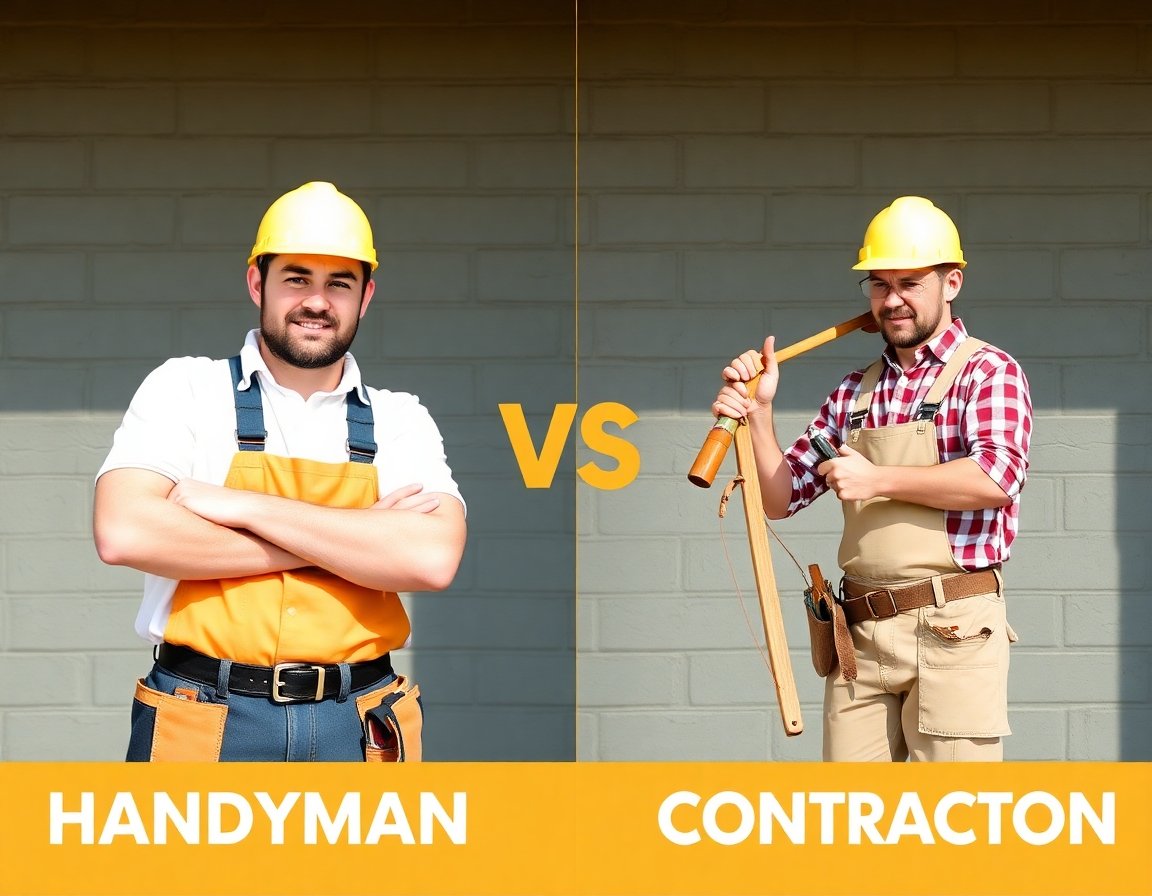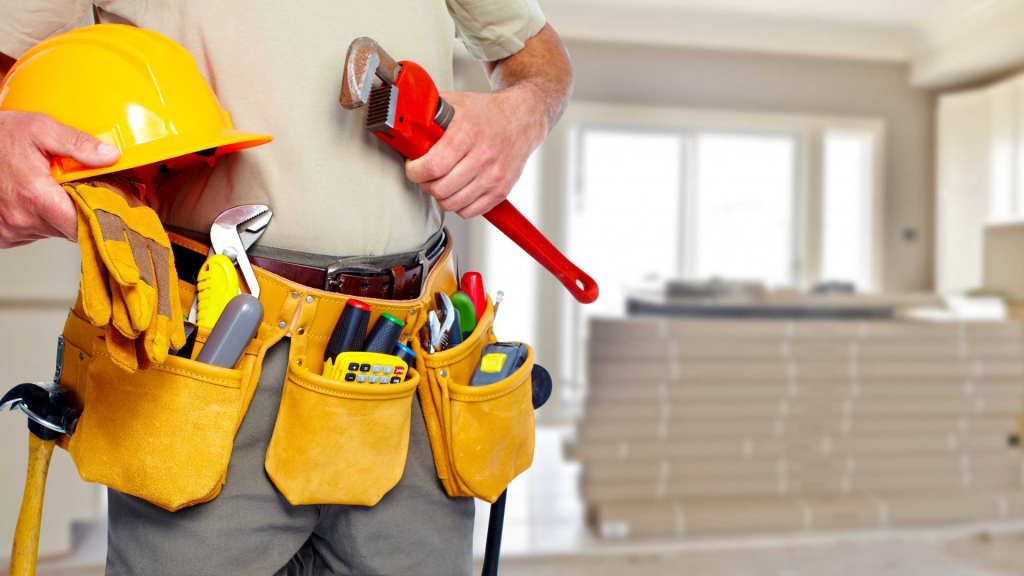10 Handyman Jobs You Probably Shouldn’t DIY
DIY tutorials and weekend projects have made many homeowners feel confident about tackling their own repairs. While it’s true that small fixes like painting a single wall or replacing a cabinet handle are manageable, larger jobs are a different story. Certain home repairs require specialised handyman skills, proper tools, building code knowledge, and even permits.
Attempting these jobs yourself can lead to safety hazards, water damage, electrical fires, structural issues, or expensive repairs later. At Santino’s A Plus Handyman Service, we handle these tasks every day, saving homeowners time, money, and stress.
Here are 10 handyman jobs you probably shouldn’t DIY and why professional help is always the better choice.
1. Plumbing Repairs and Changes
Plumbing is one of the most complex systems in any home. While replacing a showerhead or tightening a faucet handle may be simple, more advanced work should always be left to professionals. Jobs like moving fixtures, replacing pipes, installing water heaters, or repairing septic systems require permits, plumbing codes knowledge, and specialised tools.
DIY plumbing often results in leaks hidden behind walls, water waste, mold growth, or sewage backups. Even small oversights like cracked caulk or missing grout around tubs, showers, and sinks can allow water to seep into floors and drywall.
A professional handyman ensures proper installation, tight seals, correct drainage, and long-lasting results. Handyman services can also address leaky faucets, running toilets, and clogged drains quickly and efficiently, preventing expensive plumbing disasters.
2. Electrical Work
Electrical repairs are among the most dangerous DIY jobs. Even something that seems small, like adding outlets, upgrading switches, or replacing circuit breakers, can result in fire hazards, shocks, or overloaded circuits.
Electrical systems are heavily regulated, and most projects require permits, inspections, and licensed work. Improper wiring can invalidate insurance claims and create long-term safety issues.
Professional handyman and electrical services cover a wide range of tasks, including light fixture upgrades, ceiling fan installations, hard-wired system repairs, and central vacuum connections. Choosing a licensed handyman protects your home from electrical fires, electrocution risks, and costly rewiring later.
3. Deck Building
Decks are a popular way to expand outdoor living space, but building one isn’t as simple as laying boards. Elevated decks must meet strict building codes regarding joist spacing, railing height, and structural support. DIY deck building is one of the most common violations reported by inspectors.
Without the proper foundation, a deck can sag, tilt, or collapse. In addition, digging for posts without marking utilities can damage underground plumbing or electrical lines.
Handyman services ensure decks are constructed to code, anchored correctly to the home, and built with pressure-treated lumber and weather-resistant materials. A professional handyman also saves you weeks of labor by finishing the project quickly and efficiently.
4. Roof Repair
Your roof protects your entire home, yet it’s also one of the most dangerous places to attempt DIY repairs. Climbing ladders, balancing on angled surfaces, and handling materials at height create significant fall risks.
Roofing also involves more than replacing visible shingles. A handyman checks for water-damaged underlayment, cracked flashing, clogged vents, and poorly sealed plumbing stacks that run through the roof. Missed details can result in leaks that cause ceiling damage, drywall rot, and mold growth inside the home.
Professional roof repair ensures the job is done safely and thoroughly, extending the lifespan of your roof and preventing future costs.
5. Popcorn Ceiling Removal
Removing popcorn ceilings is labor-intensive and messy. The process requires scraping, sanding, patching divots, applying joint compound, priming, and painting multiple coats. Working overhead for hours on ladders adds physical strain and safety hazards.
Some older popcorn ceilings even contain asbestos, which requires certified removal. Attempting this DIY can spread harmful particles throughout the home.
A handyman service manages the entire process, from sealing off rooms and using protective equipment to delivering a smooth, professional finish. This saves homeowners days of cleanup and eliminates health risks.
6. Exterior House Painting
Painting a home’s exterior is a much bigger project than an indoor accent wall. It requires extensive prep work, including pressure washing, scraping old paint, sanding, caulking cracks, and applying primers. You’ll also need to paint soffits, trim, siding, and rake boards, often from ladders or scaffolding.
DIY exterior painting is not only dangerous but often short-lived if surfaces aren’t prepped correctly. Paint can peel, blister, or fade within a year, forcing you to redo the job.
Handyman painting services provide the right paint types, brushes, sprayers, and safety gear to ensure a long-lasting, attractive finish. Professionals can also identify related issues like rotting trim, leaking outdoor faucets, or loose siding during the project.
7. Installing Ceiling Fans and Light Fixtures
Ceiling fan and light fixture installation combines electrical wiring with ladder work. While assembling the fixture may seem straightforward, securing it properly to a support bracket and wiring it safely is complex.
Improper installation can result in wobbly fans, sparks, or fixtures pulling out of the ceiling. A handyman ensures proper anchoring, balanced blades, and wiring that meets electrical codes.
Professional handyman services also provide upgrades for outdated or flickering lights, improving both the safety and the aesthetics of your home.
8.Door Replacement
Replacing a door might look simple, but precise alignment is key for security, insulation, and smooth operation. Poorly installed doors may drag, stick, or leave gaps that increase energy costs.
Projects like French doors, sliding glass doors, or storm doors require adjustments to frames, accurate measurements, and correct sealing. A handyman ensures the door fits flush, locks securely, and enhances your home’s appearance.
Handyman services also cover door hardware replacements, weatherstripping, and threshold adjustments, all of which contribute to efficiency and security.
9. Fencing Installation
Building a fence is labor-intensive and requires careful planning. Posts must be set deep in concrete, panels must be level, and property lines must be respected to avoid disputes.
DIY fences often lean, sag, or collapse because of improper installation. Without permits, you may also face fines if your fence doesn’t meet height or setback requirements.
Professional handyman services handle the entire fencing process, from securing permits to installing posts, panels, and gates correctly. They also ensure the project avoids damaging underground plumbing, sprinkler systems, or utility lines.
10. Wall Hangings, Drywall Repair, and Finishing Touches
Small finishing tasks can have big consequences when done incorrectly. Hanging TVs, mirrors, or shelves requires finding studs and using the right anchors. Mistakes can damage drywall or puncture hidden wiring and plumbing lines.
Ignoring drywall dents, cracked caulk, missing grout, or loose trim can allow moisture into walls, leading to mold and structural damage.
Handyman services cover drywall repair, baseboard repair, crown molding installation, trim upgrades, and painting touch-ups. These finishing details make a home look well-maintained while preventing hidden problems from spreading.
Why DIY Isn’t Always the Best Choice
DIY home repairs may feel like a money-saver, but in reality, the wrong approach can be far more costly. Attempting complex jobs yourself risks:
Safety hazards: shocks, electrocution, falls, mold exposure
Legal risks: failed inspections, fines, permit violations
Expensive repairs: water damage, electrical fires, or collapsed structures
At Santino’s A Plus Handyman Service, we bring the expertise, tools, and code knowledge needed for safe, reliable results. Our handyman services cover everything from plumbing and electrical work to roofing, drywall repair, painting, and fencing.
The Smarter Choice for Your Home Repairs
DIY is great for simple touch-ups, but when it comes to plumbing, electrical, roofing, fencing, or drywall repair, attempting the work yourself can cost more in the long run. Professional handyman services provide the right tools, skills, and knowledge of building codes to ensure every job is safe, efficient, and long-lasting.
At Santino’s A Plus Handyman Service, we take pride in handling the home improvement projects you shouldn’t DIY. From electrical upgrades and plumbing services to fence installation, drywall patching, and ceiling repairs, our team delivers reliable results that protect your home, save you money, and give you peace of mind.
FAQs on Handyman Jobs You Shouldn’t DIY
Basic tasks like painting a small wall, changing a showerhead, or tightening drawer slides are safe. Anything involving plumbing, electrical, roofing, or major structural changes should be left to professionals.
Plumbing mistakes can cause leaks, mold, sewage backups, and hidden water damage. Even a small caulking error can create thousands of dollars in repair costs.
Yes. Projects like deck building, electrical upgrades, and major plumbing work typically require permits. Skipping them risks fines, inspections, or demolition orders.
Preventive repairs like fixing leaky faucets, repairing drywall holes, sealing grout, and upgrading electrical fixtures save money by stopping bigger issues before they start.
We provide affordable, reliable handyman services for plumbing, electrical, painting, drywall, fencing, and more. Our team ensures safety, compliance, and lasting results.





